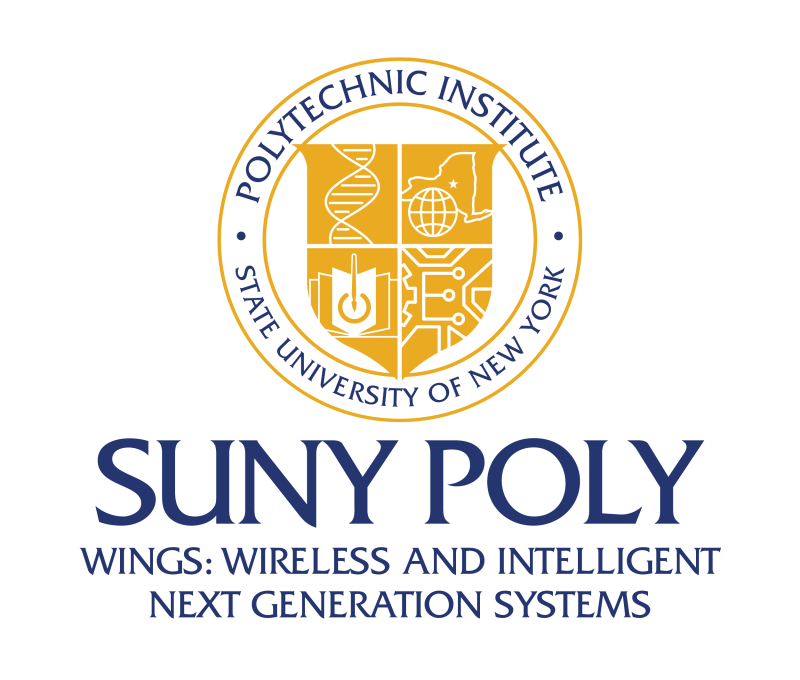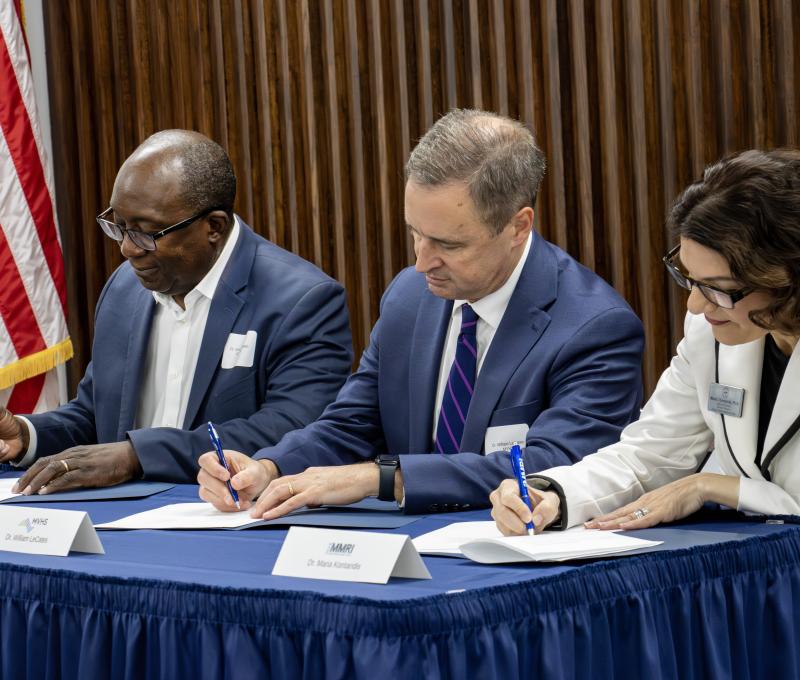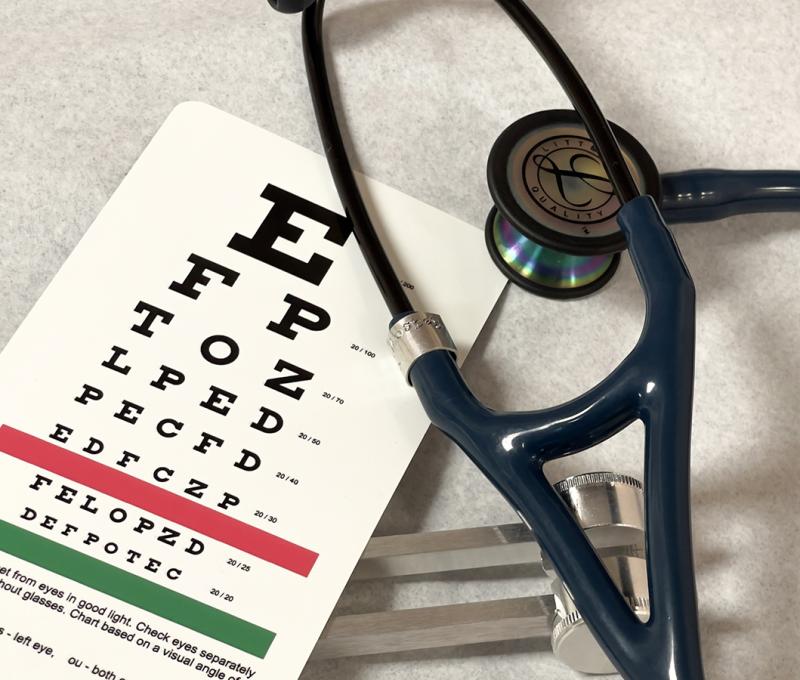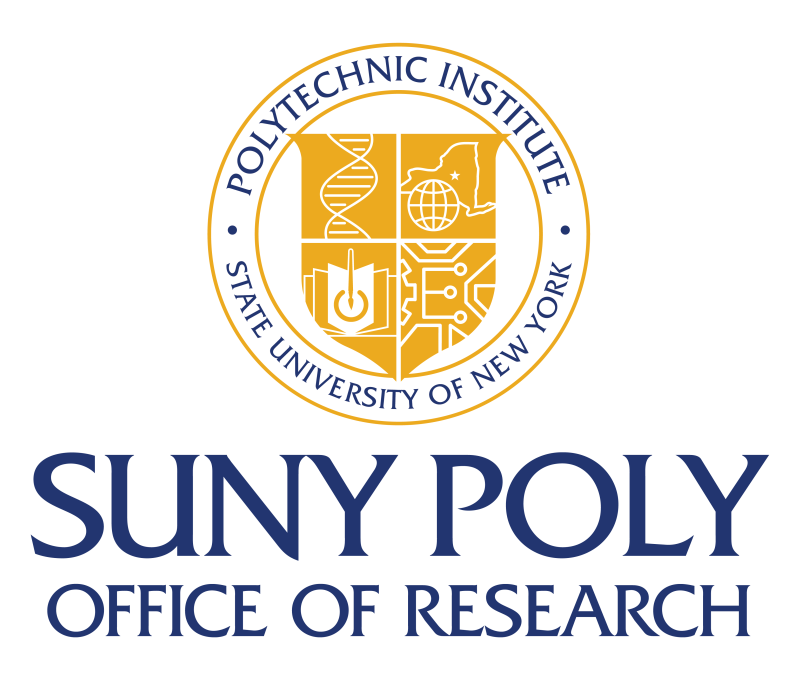News Release: SUNY Poly Awarded $276,000 by Air Force Office of Scientific Research for Quantum Mechanical Switching to Advance Next-Gen Electronic Devices

For Release: Immediate – September 30, 2019
Contact: Steve Ference, Director of University Communications | (518) 956-7319 | sference@sunypoly.edu
Grant in collaboration with the University at Buffalo supports demonstration of electron quantum states control in semiconductor ballistic waveguides to spur improved electronic device capabilities
ALBANY, NY – SUNY Polytechnic Institute (SUNY Poly) announced today that Professor of Nanoscience Dr. Serge Oktyabrsky has received $276,000 in funding from the Air Force Office of Scientific Research as part of a collaboration with the University at Buffalo’s (UB) SUNY Distinguished Professor Vladimir Mitin. The joint SUNY Poly/UB team aims to develop principles and technologies enabling the direct manipulation of electronic quantum states within semiconductor ballistic waveguides by external electric field. The overall project will also provide exciting student and internship opportunities.
“On behalf of SUNY Poly, I am thrilled to congratulate Professor Oktyabrsky for his research efforts which could inspire groundbreaking electronic devices that have relevance for improved low-power switches as well as quantum devices,” said SUNY Poly Interim President Dr. Grace Wang. “This research grant is yet another testament to SUNY Poly’s research capabilities and faculty efforts to advance our knowledge and the technologies that can move our society forward, as it provides unique experiential research opportunities for students.”
It is expected that this effort will lead to the novel implementation of quantum mechanics and push the limits of technology, for example, by retaining unique features and benefits, such as ultra low voltage switching down to millivolts, or one-thousandth of a volt (as compared to slightly under 1 volt switching in modern state-of-the-art transistors), in addition to allowing for the significant reduction of power dissipation, improved matching with metal interconnects, and the reduction of “noise” in electronic circuits. The demonstration of these characteristics could help lead to next-generation electronic devices for a number of applications, from high-density, low-power electronics to quantum information processing.
“I am grateful to the Air Force Office of Scientific Research for providing this grant, and I look forward to continuing our research partnership with the University at Buffalo and utilizing the expertise of our compound semiconductor team at SUNY Poly as we leverage our molecular beam epitaxy and e-beam lithography technologies to fabricate test structures and devices,” said Professor Oktyabrsky. “This award continues very productive previous collaborative projects with UB on semiconductor devices, including novel quantum dot solar cells and infrared photodetectors, and we are optimistic about the potential of this research to provide not only faster low-power switches, but also a novel approach to the development of various quantum information devices, in addition to invaluable student educational opportunities.”
More specifically, the Air Force Office of Scientific Research grant is based on demonstrating a specially designed nanoscale semiconductor structure enabling electrons to travel as one-dimensional waves. High-efficiency gate electrodes control the electron wave propagation in “Y-shaped” branching waveguides, which help direct the electrons to a desired location and enable the desired electronic device characteristics. Significantly, this device operation is conceptually different from transistors, the building blocks of computer chips, and it could potentially eliminate fundamental constraints that currently limit performance of microwave and fast digital components.
Throughout the three-year grant, a number of students will be able to gain a hands-on education in this exciting area of research. Staff scientists, one SUNY Poly graduate student, interns, as well as high-school seniors will be provided related and unique lab experiences as they assist with processing the device structures and take part in the analysis of electron transport properties.
####################
About SUNY Polytechnic Institute (SUNY Poly)
SUNY Poly is New York’s globally recognized, high-tech educational ecosystem. SUNY Poly offers undergraduate and graduate degrees in the emerging disciplines of nanoscience and nanoengineering, as well as cutting-edge nanobioscience programs at its Albany campus, and undergraduate and graduate degrees in technology, including engineering, cybersecurity, computer science, and the engineering technologies; professional studies, including business, communication, and nursing; and arts and sciences, including natural sciences, mathematics, humanities, and social sciences at its Utica campus; thriving athletic, recreational, and cultural programs, events, and activities complement the campus experience. As the world’s most advanced, university-driven research enterprise, SUNY Poly boasts billions of dollars in high-tech investments and hundreds of corporate partners since its inception. For information visit www.sunypoly.edu.








